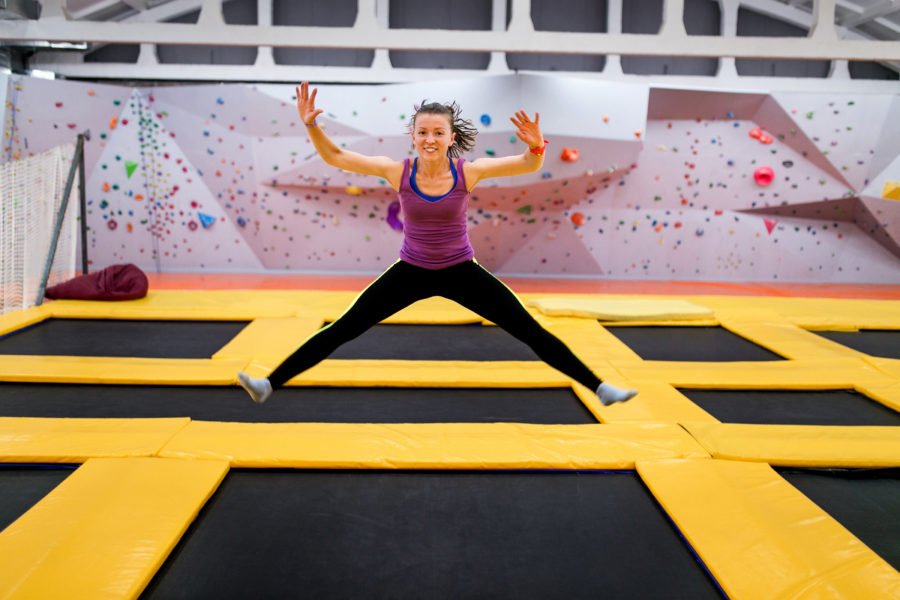Behind the bounce: trampoline science

HAVE YOU EVER been to a trampoline gym? The walls and floors are lined with trampolines and everyone is bouncing around! Maybe you have your very own backyard trampoline to play on?
Bouncing bodies
Lots of things are happening to your body when you bounce on a trampoline. Using a trampoline for jumping is an excellent form of aerobic exercise but not only that, it can benefit your coordination and your cardiovascular system. Bouncing on a trampoline regularly can even help increase your body’s metabolic rate and its ability to burn calories more efficiently.
It’s so good that even astronauts use it for training before they go into space. During an experiment NASA found that 10 minutes bouncing on a trampoline is even better than running for half an hour! NASA reported that, “for similar levels of heart rate and oxygen consumption, the magnitude of the biomechanical stimuli is greater with jumping on a trampoline than with running.”
Bouncing even affects your cells in such a way that it helps your body get rid of waste products and nasty toxins. When you jump a few things are happening, one of them is when your feet hit the trampoline mat, all your body’s cells are being compressed a little. When you jump up into the air you’re experiencing weightlessness, where all the pressure is taken off your muscles, bones and internal organs. It’s that amazing feeling you get when you reach the peak of a bounce and you feel really light, like you’re floating or flying!
It’s this process of constant acceleration and deceleration that helps your cells flush out waste products and toxins. It’s especially good for the lymphatic system in your body.
What makes a trampoline bouncy?
Whilst it may look simple, the trampoline showcases a number of different types of energy transfers, including gravitational potential energy, kinetic energy and elastic energy.
Let’s say you’re standing still at the edge of your trampoline. Both you and your trampoline have potential energy. Potential energy is stored energy ready for use. Food is a good example of potential energy. The food you eat sits in your body which you can use to power your daily activities, like when you bounce up and down on a trampoline! Trampolines also store potential energy thanks to the springs surrounding the trampoline mat, which you can also use to bounce with.
As soon as you step onto the trampoline and start bouncing you now have kinetic energy. All moving things have kinetic energy, including tiny things like atoms and huge things like planets, and medium sized things like you! How much kinetic energy you have is a combination of your weight and your speed.
So what makes a trampoline bouncy? Energy!
For more exciting science stories look through the rest of the Australian Geographic website, or get your hands on a copy of our latest Explorers books!

